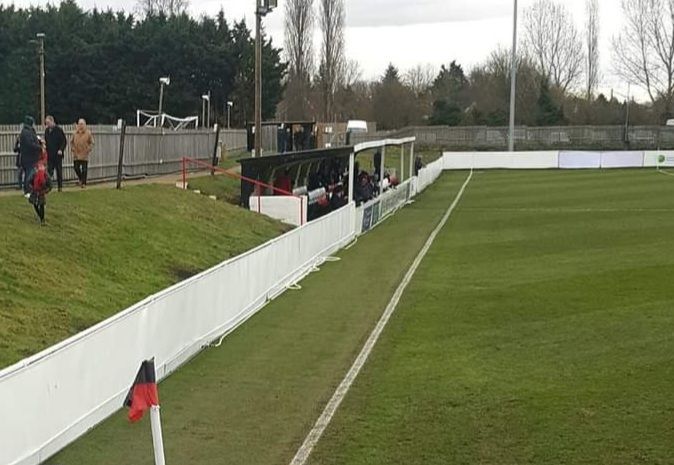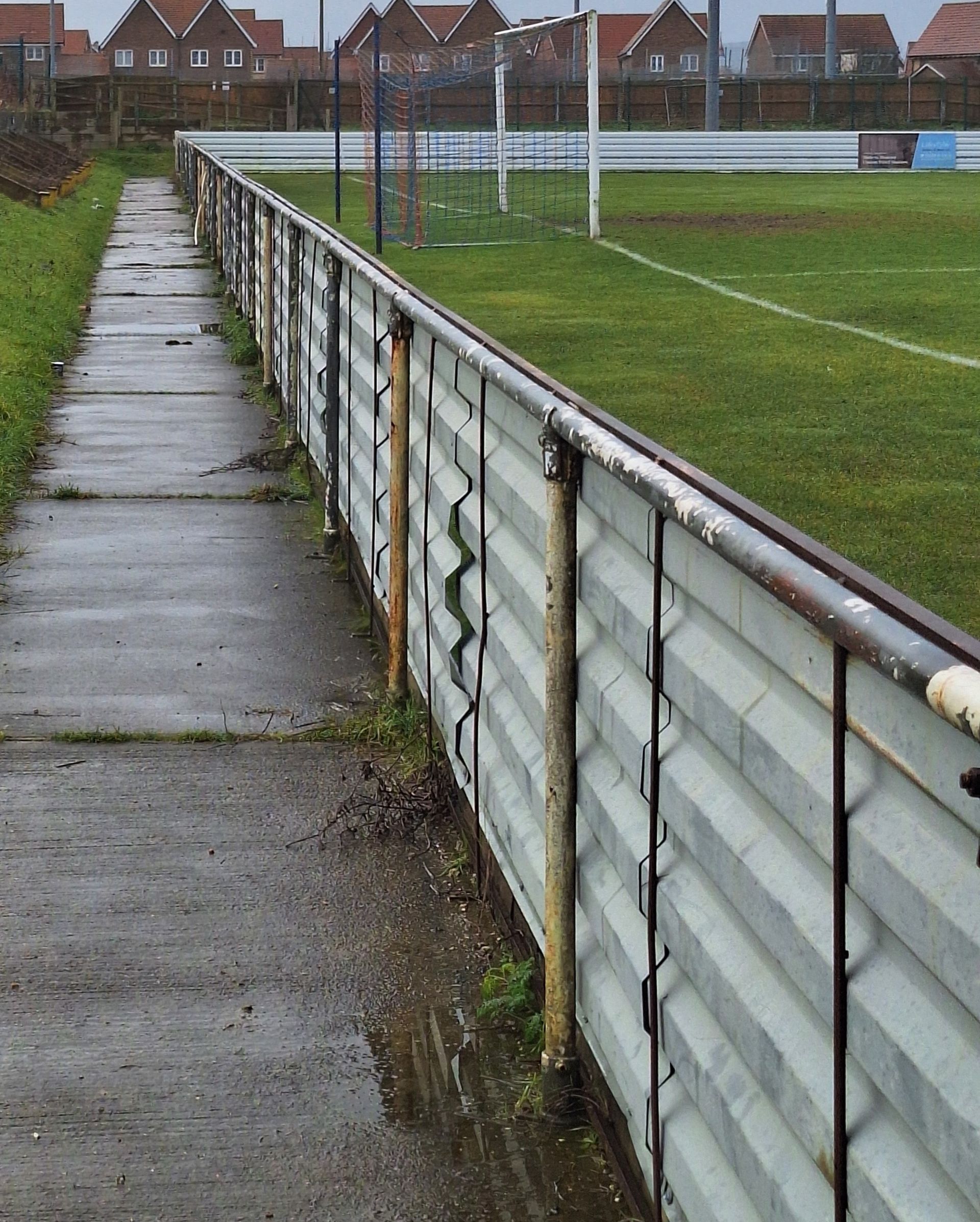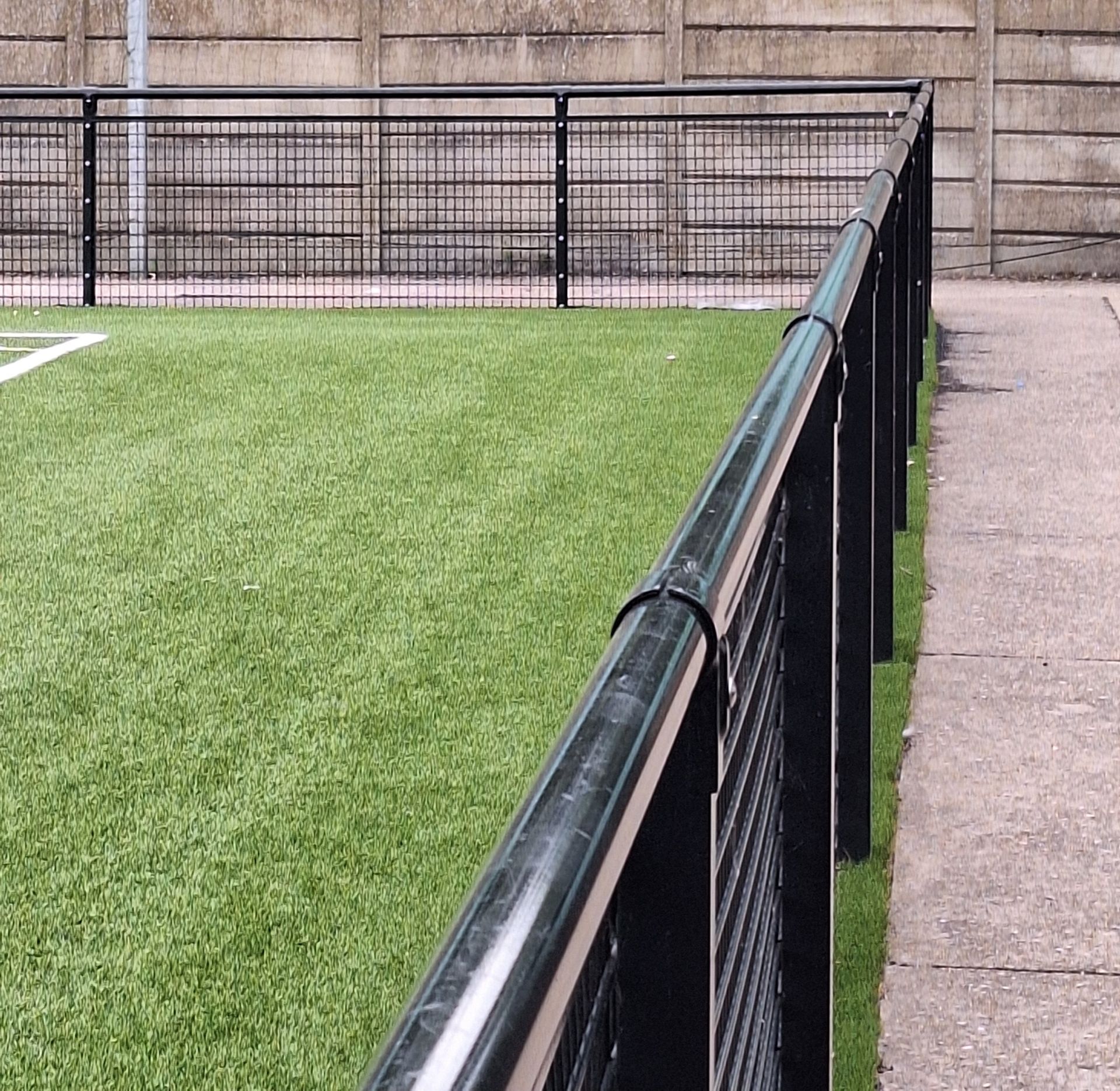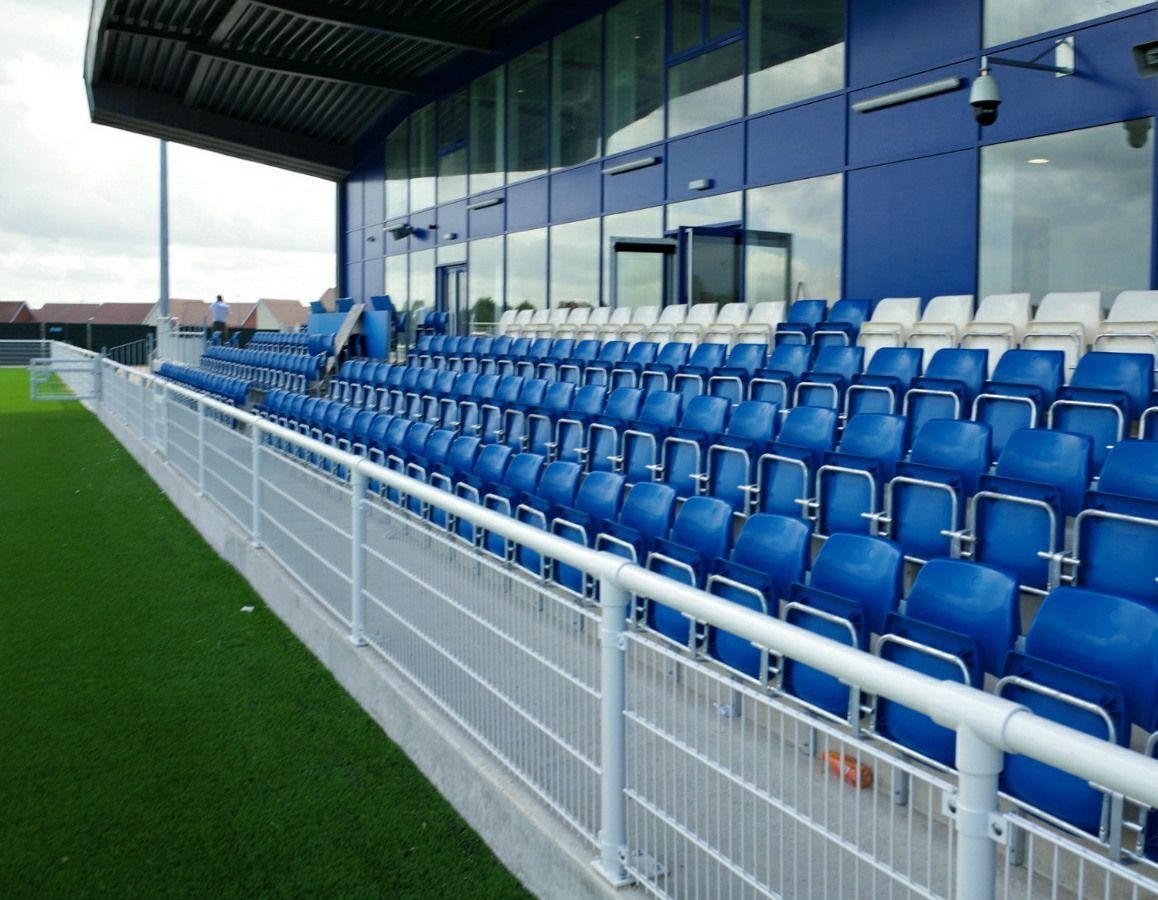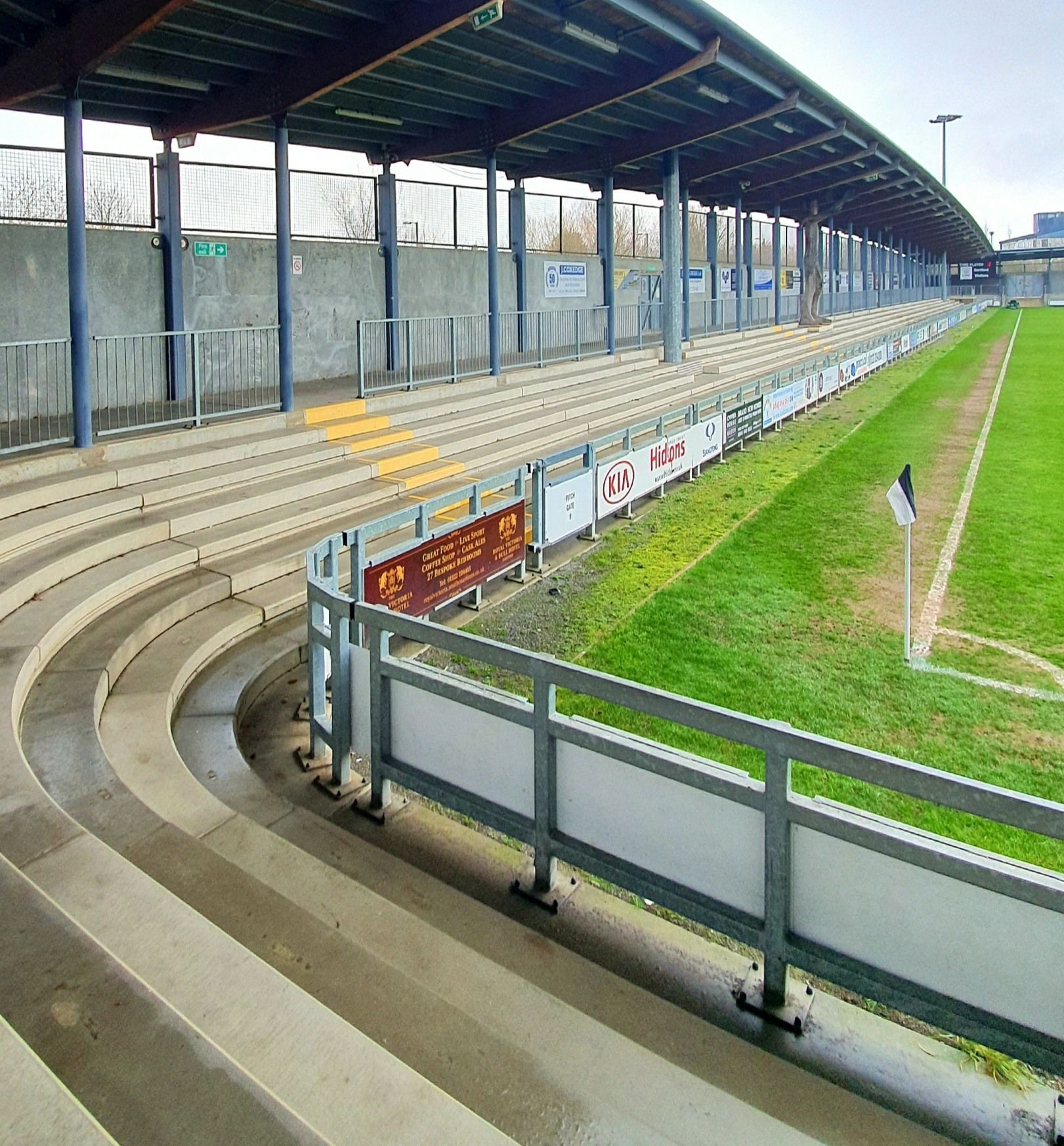stadiumaccreditation.uk
groundgrading.uk
The Tragedy of Billy Vigar and
The pitch barrier debate
Pitch barriers, compliance and a discussion for change.
09/10/2025. UPDATE
How many grounds are affected?
After various initial statements were released by The FA that were not perhaps wholly to the point of addressing the issues at hand arising from the tragedy of Billy Vigar, it does now seem that a roadmap has been decided for the scope of changes required, at least some of them. This undoubtedly has been informed by data provided through the digital Stadium Accreditation programme, known as Stadium Power.
This digital recording platform, which has been in operation for the collation of all ground grading information for every NLS ground in England and Wales for 3 seasons, can identify grounds with concrete/brick/block perimeter barriers at the touch of a few buttons. Overall it is estimated that over 150 grounds need some action to remove such perimeter walls around pitches at every level of the game.
How much will this cost?
A quick estimate for work to replace the affected pitch barriers (or part of them) could be around £5,000,000 to £6,000,000 in my opinion if we estimate £40,000 (including removal and disposal of the old barriers) per affected ground, but bearing in mind that some grounds with bigger pitches may cost more and some grounds may only need part of the barrier replacing. That figure could more than double if the removal/replacement of square concrete posts that are part of any barrier system are included. Staring at a cost of maybe £10,000,000 to £14,000,000 The FA will undoubtedly look to The Premier League to fund this, wholly or in collaboration with Government, with some contribution from The FA itself perhaps. This however, is primarily a football issue of course and in the right scenario the EPL should really step in to cover all of it. The positive publicity will undoubtedly make up for the lack of a consistent 5% contribution from them to NLS/Grassroots football that was promised since EPL inception. And this is clearly the right and proper way forward. The EPL will understand fully the seriousness and urgency of the situation and whilst this will involve a lot of money is has to be placed in context of the EPL broadcasting deals that started this season for a 4 year period worth £6.7 billion.
Who else should be involved?
Additionally the HSE should have an important role to play too. They should be out inspecting a few representative grounds that are affected, looking at the barrier systems currently preferred by The FA and agreeing with all stakeholders on the right replacement systems to be used now and going forward the right barriers to be specified in all Stadium Accreditation documents. Whilst it is unlikely that any system used can reduce potential injury to zero, the right system can substantially reduce risk. And this should be the goal of such massive investment in our game. The SGSA (Sports Ground safety Authority) will also have their input as they currently write and compile the latest guise of the Green Guide (7th Edition), which is the bible for all sports ground design and development, including at NLS level.
The Premier League Stadium Fund (part of the Football Foundation) will undoubtedly be the organisation and hub to carry out the administration for this essential upgrade work but it would be good to see this project named The EPL Billy Vigar Fund. If the works and funding are agreed in a timely fashion then all credit will go The FA, EPL and PLSF for acting in a responsible manner to resolve the serious matter at hand.
--------------------------
26/09/2025. The tragic passing this week of young footballer Billy Vigar (a month before his 22nd birthday) has focused minds on how such a terrible accident at a non-league football match could have been prevented. Quite rightly so. The player suffered serious head injury after colliding with the pitch perimeter structure during a league match.
A solid block wall at Wingate & Finchley FC where the match was held is the structure, better known and for compliance purposes as a pitch perimeter barrier. This is something that defines a boundary and separates players from spectators. Normally at National League System football one may expect to find a round steel post and mesh infilled structure that prevents the ball passing through it. The latter element of the structure is a requirement at Step 4 of the pyramid and above. Wingate and Finchley are a Step 3 club playing their league football in the Isthmian Premier Division. Below Step 4 a simple post and rail affair will suffice (within defined parameters).
The rules and regulations surrounding football grounds in the NLS are fairly tightly controlled by comprehensive ground grading or (latterly known as) Stadium Accreditation compliance documents. These set out all manner of things pertaining to the ground itself and define a set of parameters for all NLS grounds, depending on the level the club are playing at. The highest requirements are at Step 1, the lowest at entry level, Step 6. Grounds are inspected every 3 years and for the last 17 years I have been one of those few independent FA ground Inspectors. And I have inspected the ground at Wingate and Finchley more than once in that time.
Let me say straight away that whenever I encounter a walled pitch barrier I flinch, but generally and not up until now so much from a player perspective. I flinch at the memory of watching a pitch wall collapse from a surge of fans whilst watching a match at Leyton Orient and countless other times I have seen it happen at other grounds in videos and pictures (it is still happening). Unsupported walls are notoriously weak under pressure and their continued presence at football grounds is a throw back to the days when these grounds were built, many, many years ago and before the advent of and widely available advanced and strong but lightweight perimeter barriers made of steel and mesh. Some walled structures have now been strengthened by steel pole bracing, others have not. I will go into this subject in more detail another time.
Pitch barriers come in all different guises and are made of varying materials. Sometimes a wall may be just a part of the overall barrier. But as already mentioned, generally for a ground inspection the pitch barrier is looked at closely and details recorded on the new digital compliance system know as Stadium Power. Information required is: How far from the spectator hardstanding is the barrier, how high is the barrier, is the barrier infilled, what materials is the barrier made of, how are any advertising boards attached, what condition the barrier is in etc and how far the barrier is from the pitch itself.
The pitch perimeter wall at Wingate & Finchley has been deemed to have passed all of the above and the ground has a clean bill of health as far as the Stadium Accreditation (ground grading) documents are concerned. This also includes that the ground has met or exceeded the minimum stated pitch run-off depth of 1.83m clear of obstruction, a crucial element when considering player welfare. The minimum of 1.83m is needed for existing grounds. Although, at Step 1 (National League) of the NLS this is increased to a minimum of 2.25m with a measurement of 2.75m preferred. For new grounds a minimum run-off of 4m is preferred, with a minimum of 3m mandatory. All of this helps to keep structures further from the playing area. For the construction of new grounds the type of materials that can be used to form a pitch perimeter barrier are clearly defined – and they do not include a solid wall. Interestingly, the documents also refer to the barrier in terms of spectator bias ….”whatever system is employed a club should be mindful of its responsibility to ensure spectator safety and minimise the possibility of unauthorised incursions on the playing area.” For new grounds the document does make note of player welfare when referring to the barrier.... “Fixing of panels and sponsors' signs should be done in a safe way to avoid injury to players sliding into the barrier”. But, it is important to note that any ground inspector would be mindful and take note of any visible issues with the barrier, such as bolts sticking out or broken advertising boards or broken barrier rails or posts.
A myriad of pitch barrier types can be seen throughout non-league football
Options, solutions, funding.
What is clear is that solid walls are not appropriate as a pitch barrier. A wider pitch run-off may help but some grounds are tightly drawn and this is likely to be prohibitive. New grounds are specified from the start to have a wider run-off. The alternative for existing grounds is to decrease the minimum pitch size from 100m x 64m to allow for a deeper run off but this would have huge implications. Much more practical is for solid walls as pitch barriers to be effectively banned, removed and replaced by a suitable structure as defined perhaps by the new ground build terms as stated in the Stadium Accreditation document. Where walls make up only a part of pitch barrier system, there is a company that makes padding that could be fixed in place and certainly provide some protection. It is doubtful this is wholly practical though to install on all 4 sides of a pitch. I would go further to be comprehensive in this change of thinking and also suggest a ban and require replacement of all concrete supporting posts for pitch barriers. These are unyielding and importantly square in nature providing the added issue of hard blunt edges that could exacerbate injury risk. Of course, a player interacting with any style of pitch barrier could cause harm, but using modern, slimmer round steel posts to support a barrier can help to reduce this risk. A body part can move around a slim, round metal post a lot easier than it can a solid square concrete post. Mesh infill allows for some give on impact, unlike concrete, block or brick.
To implement a comprehensive change to the structure of pitch barriers across the NLS would undoubtedly cost a lot of money and possibly £millions. The cost of installing a whole new enclosure ranging from an estimated £25,000 to £40,000 per ground. However, the new digital Stadium Power inspection system should be able to provide evidence of the number of grounds affected within hours and an outline cost implementation could be estimated within a few days, rather than a few months.
Again, it is only my personal opinion but through The Football Foundation and Premier League Stadium Fund an allocation of funds provided by grants to affected clubs could be made available and fed (if necessary) by a one-off increase in funding from The Premier League and FA as required. A structured allocation of funds to clubs for the work to be done could be defined by region after a collaboration with pitch barrier system suppliers in order to complete works as soon as possible without overloading the supply system.
And what happens now?
First of all clubs need to take responsibility by taking a tour of their own ground, both on the players side of the pitch barrier and the spectator side. Broken pole mesh or infilling, advertising boards, protruding bolts (protruding anything!) and general condition should be viewed critically and any works needed carried out.
Then out of the tragedy of Billy Vigar should perhaps arise the 'Billy Vigar Fund'. This could be costed by The Football Foundation, funded by the Premier League, titled to honour the player and his family and delivered through The Football Foundation. This would help to essentially address an improvement to player welfare with the repair, upgrade, replacement of pitch barriers across the National League System as needed. And whilst no injury risk can be removed completely, importantly the risk can be reduced. If a rapid inspection process is required to ensure every ground with a potential issue is properly identified, so be it. But that needs to happen quickly after identifying the grounds and deciding on a way forward and what needs to be done, before the vivid memory of this event fades.
A proper investigation will follow the passing of this young man & footballer whose whole life was ahead of him - and I'm sure it has already started. Some matches were quickly postponed in the aftermath and all eyes will now be on The FA for reassurance, guidance and positive action. I personally see it difficult to believe that change will not be forthcoming. Whilst a kneejerk reaction is to be avoided, a thorough consideration is required and it seems the solution to a clear and obvious conclusion is one that could be implemented in a reasonable timeframe for the benefit of everyone who attends football matches at Steps 1 through 6 of the NLS, especially the participants.
For now, all our thoughts and prayers are with the family and friends of Billy Vigar.
Share this page
